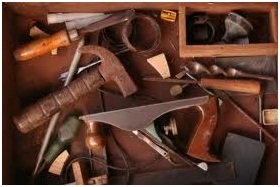|
DIY Speakers
DIY Speakers - READ THIS FIRST! This chapter will be almost the same as DIY Amplifier. This page is about DIY speaker and that is about DIY amplifiers. Don’t just jump straight in! Before we get started, we need to adhere to the processes in order to avoid complications in the later stage. Spending more time now will reward us and prevent us from having a big headache in near future! Let’s do it right the first time! Here are the major steps:
Wants & needs analysis What do you want and need in your DIY speakers? Are looks important to you? Or only the sound matters? What kind of SPL (sound pressure level) are you looking at for your listening preference and environment? What’s your amplifier power output? All these and many other reasons dictate the kind of speakers you would build. Take some time and know what they are before you proceed further. This will ensure you do it the 1st time right! Or second time and not the n-th time. LOL. You will have to know the following before you start your DIY project: Speakers output & size requirement depends on
Functionality/ usage model
Sonic characteristics / tastes
Cost / budget
Connections
Partnering equipment
Speaker protection / safety
Go listen around to see what you like. This will help you to determine what kind of speakers you would build. Each design has their sonic characteristics. If not, do like what I do, make a few pairs to cater for different types of music! Find those you like and just build them! After you’re clear on what you needed and wanted on your analysis above, the real fun begins! It always takes me the longest time to research and design your speakers. There are just soooooo many designs out there and soooo many things to consider. R&D in DIY speakers here could be applied here to the type selection (single driver, 2-3 way, and etc), enclosure design (ported, closed box, horn, transmission line, and etc), layout design (MTM, tweeter-mid-bass, tweeter-bass, bass-tweeter, and etc), cabling, connectors and etc. The fun part about designing your own speakers is, instead of being limited to what other people designed, you can decide on your own! No one knows you better! Take your time here. You will be handsomely rewarded if you put enough care and effort in this phase. Expandability and design for test Whenever you build your speaker, always think about these 2 words – expandability & DFT (Design For Test). Leave some room for expansion. One will never know what might arise in the future, or even during the construction process! Something might go wrong and demand for space for further / future upgrades, tweaks, or even correction! On the other hand, always layout and make your speaker as testable as it can be. After you finished building your speaker, what comes next is the testing phase. Even after the system is in service, one might need to service or tune it if some components break down, loosened connection, blown driver and etc. All these require thoughts and planning prior to the construction. Planning & sourcing for components This could be the fun part for some, and pain in the *** for some. LOL. I, for one, love sourcing for parts, minus the act of taking out my credit card or hard earned cash to pay for them. LOL. Sourcing is just like cooking! Think of what to cook, and go get all the ingredients. The fresher and better the ingredients, the better your dish would be. Once the design is finalized, you can start listing out all the required parts in a spreadsheet and categorize them:
Hardware could be wood, screws & nuts, spanner, screwdrivers, saw, drill & bits, and etc. Electrical & electronics could be speaker drivers, wires, capacitors, resistors, inductors, fuses, multimeters, LCR meter, oscilloscopes, spectrum analyzer, distortion analyzer, and etc.All these can be obtained at your local stores, our bought online. There are mainly 2 types of stores, audiophile and non-audiophile versions. Non-audiophile versions could just be like Maplin, Mouser Electronics, Radioshack, RSWWW, Farnell, and those general hardware, electrical & electronics stores. Audiophile ones are those that cater for mostly audio related components, and usually they carry a premium due the better sound quality and marketing strategy of the shops. I use a mixture of audiophile and non-audiophile components. Audiophile components do bring better sound quality no doubt! I use generic components for those less critical (to sound reproduction) areas and splash on those important sections like the speaker drivers, and crossover. If you use all exotic and premium parts, it could be a very expensive but very high end DIY speakers! 
Even eBay and Amazon are good sources for components! Build and finishing DIY Speakers How do you want your DIY speakers to look? Like “DIY audio projects” or professionally finished? We’re lucky nowadays as there are lots of materials available for us to choose. Even a drive to Home Depot will get you most of the needed hardware. I tried several cabinet materials and the best I like is still using real wood or marine plywood as the enclosure material. It is more expensive but it is worth the money! Finishing options are plenty as well, like paint, lamination, real wood, powder coating and etc. Different finishing has their pros and cons. One can even hire or commission someone to build the speaker enclosure for you. I do use this option some of the time since I’ve several friends who are in this line. They can use CNC machine to build me nice enclosures with a small charge. Make sure you plan your hardware work properly. Then your DIY speakers will look great! Defects on the surfaces will ruin the finishing and give you more hard work if you want to repair it to look nice later. Testing & tuning DIY speakers for good sound Have you used, or even heard of multimeters, oscilloscope, SPL meter, microphone, spectrum analyzer, frequency generator / synthesizer, distortion analyzer, and such? Don’t worry! We shall give you a briefing on them too in this website. For now, just remember that they will be your best friends in the DIY amplifier world. The MOST basic equipment one should own is the multimeter. You can live without the others but this is a MUST. It will be used to check the inductance, capacitance, resistance, open / short, frequency, voltage (AC & DC) and etc.. When a project is completed, we shall use the multimeter to check every point of the speaker to make sure everything is built according to the design. How do we tune the speaker sound? This is a very difficult question! This can be done through many, many ways! It is impossible to cover it all in just the briefing / introduction section. We shall share with you on the tuning as we post more DIY projects or DIY amplifier projects in this website. These are just a few ways on how we tune the sound and are not comprehensive:
Lastly, just do it! Installation and setting up in your system Congratulations! You’ve come to the stage of installing and setting up your DIY speakers in your system. You’ve come a long way and I’ve gotta give you a pat on your back, and tell you “Good job mate!”. Nothing beats listening to your own hand crafted project for the 1st time. I’m sure it would be a great looking and sounding project too if you put enough effort into making it. All right! This sums up what we’ve to say on DIY speakers on a 10,000ft altitude. We shall cover more on those topics in the later phase. This is just the introduction to DIY speakers world! Ken 4/4/2011 DIY speaker projects & ramblings Check out the Coral Flat 8A speaker drivers Check out the Coral 10CX-501 speaker drivers Check out the Tannoy Monitor HPD 385 in Berkeley cabinet DIY Fostex FE167 Floorstander Loudspeaker 7/27/2011: Parts Express DIY speaker projects. Return from DIY Speakers to Speakers
Return from DIY Speakers to DIY Audio Guide
|


